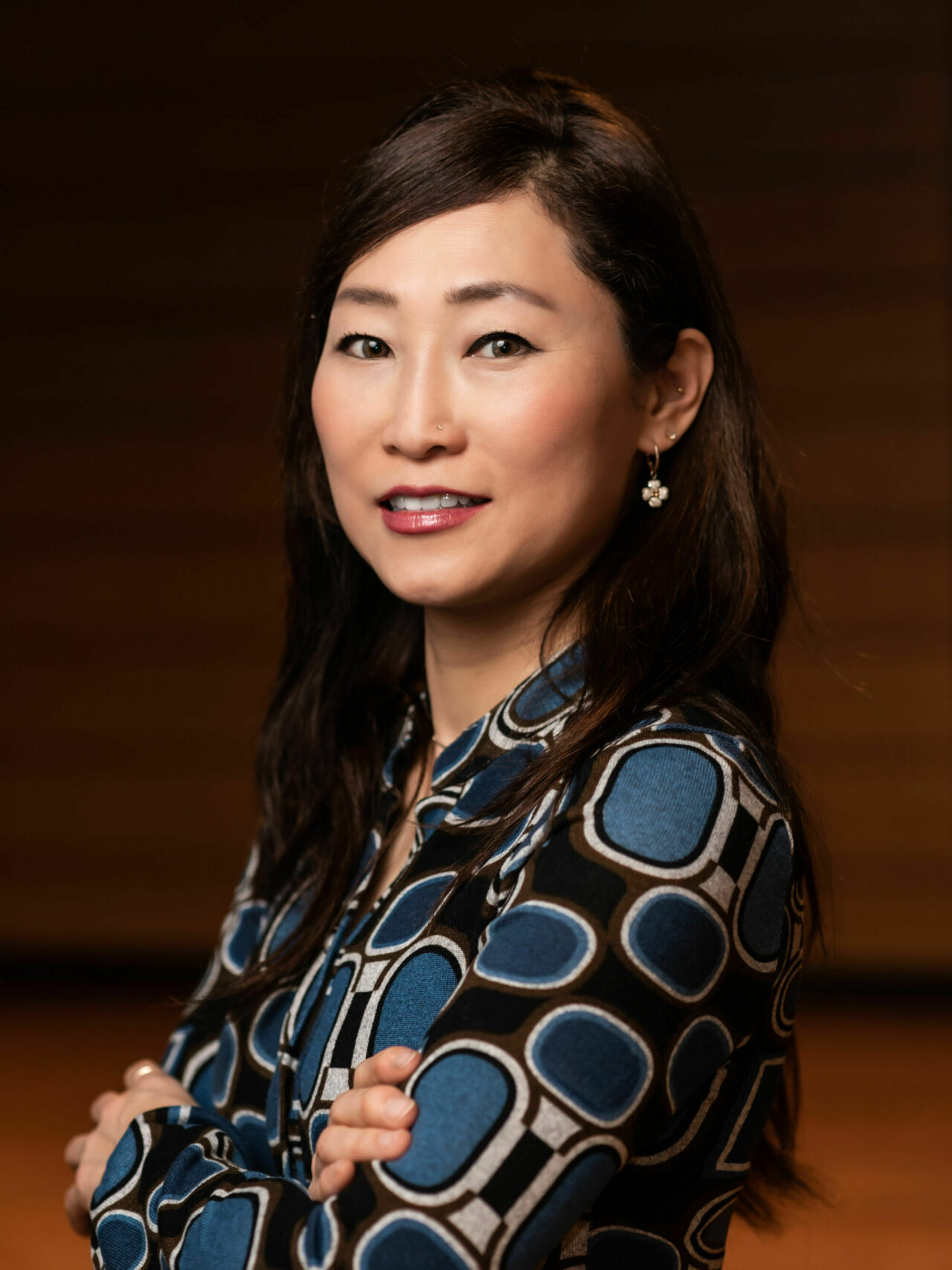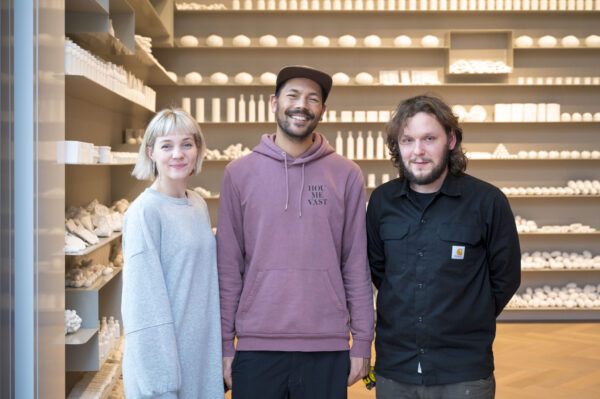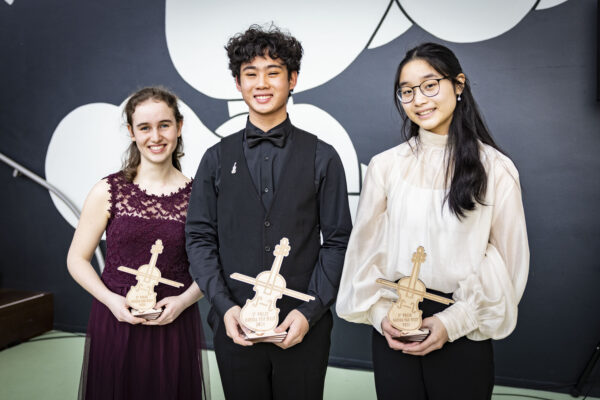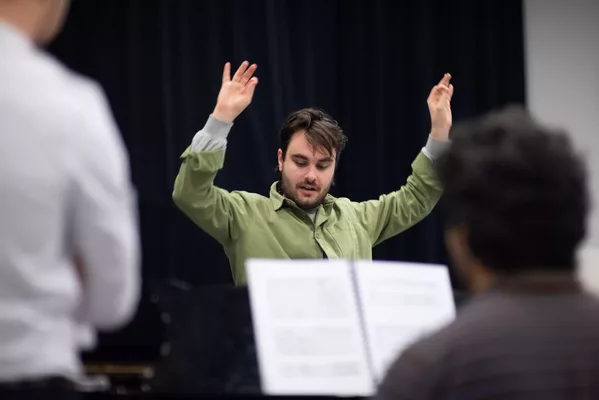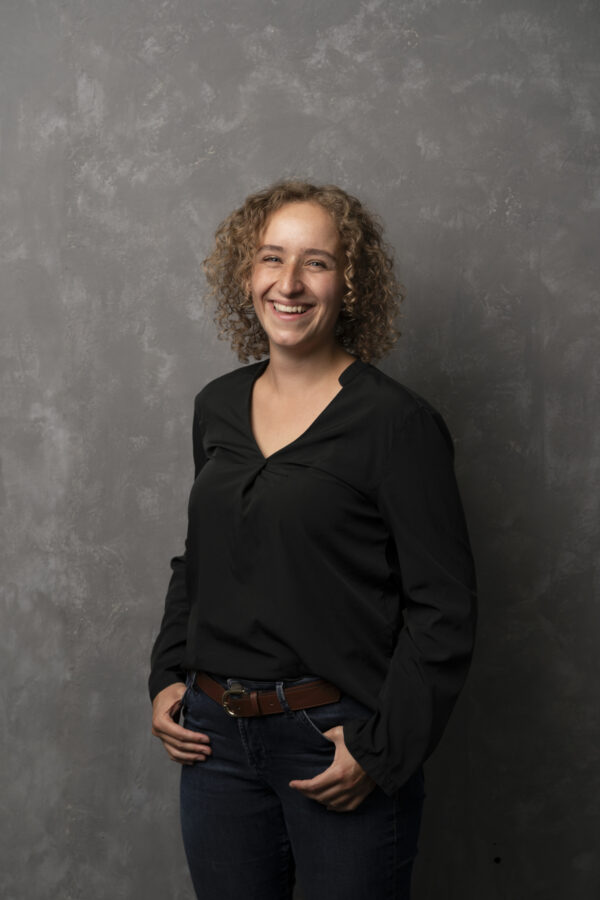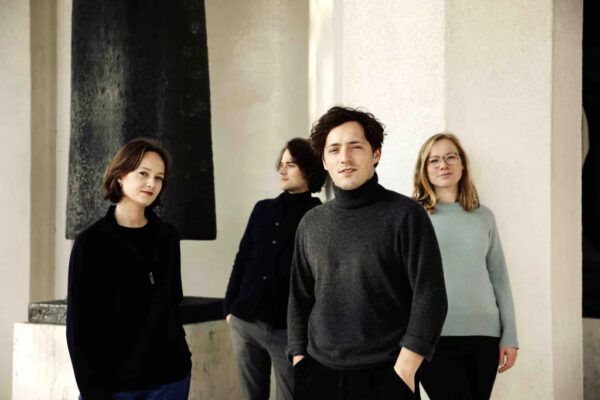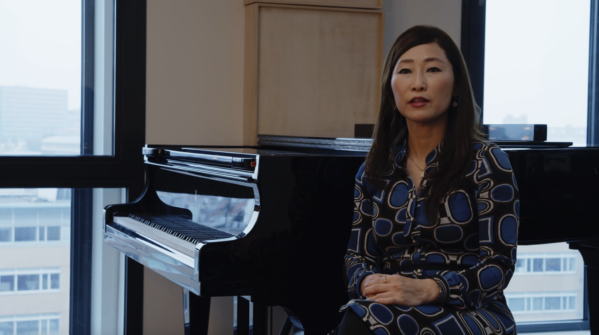The Ensemble Academy, a one-year master specialization, focuses on contemporary ensemble playing. In the contemporary music field as a musician you sometimes get to work directly with the composers whose music you are performing. One of those intense and fruitful collaborations between composer and performers recently took place in the Conservatoriumzaal in Amare.
Seung-Won Oh, a native of South Korea, is recognised as a composer with a unique, individual voice. She came to The Hague to study Composition in 2001 and was one of the last students of Louis Andriessen. For this concert, Seung-Won Oh has been given carte blanche to curate a concert with her own compositions.
Eva Beunk, alumna of the Composition department, interviews her about this concert.
How did you decide what you wanted to do in this concert?
'I was given 80 minutes, the Conservatoriumzaal, a list of available musicians, and within that framework, I could do whatever I wanted. I felt like a curator in the gallery of a museum, I could fill the space of the Conservatoriumzaal with my music and think about how my pieces would fit together in a nice way.
When Marlon Titre (head of the Classical Music Department) approached me with this opportunity, I had just finished YeonDo, a requiem commissioned by November Music. This requiem was performed at the Jheronimus Bosch Art Center, and when I saw the space, I immediately visualized musical ideas. I wanted to use the space, and the musical form was actually derived from that.
Coming out of that production, I realized the effect of music on an audience, when the audience is surrounded by the music. I decided to continue this way in the Conservatoriumzaal. I didn't want the traditional concert structure, where the musicians come on stage, bow, sit down, play the music, bow again, and do the same thing over and over again. My music had to be presented in a continuous musical journey, eliminating as many pauses as possible between pieces and involving the whole space. And that is how I curated the concert.'
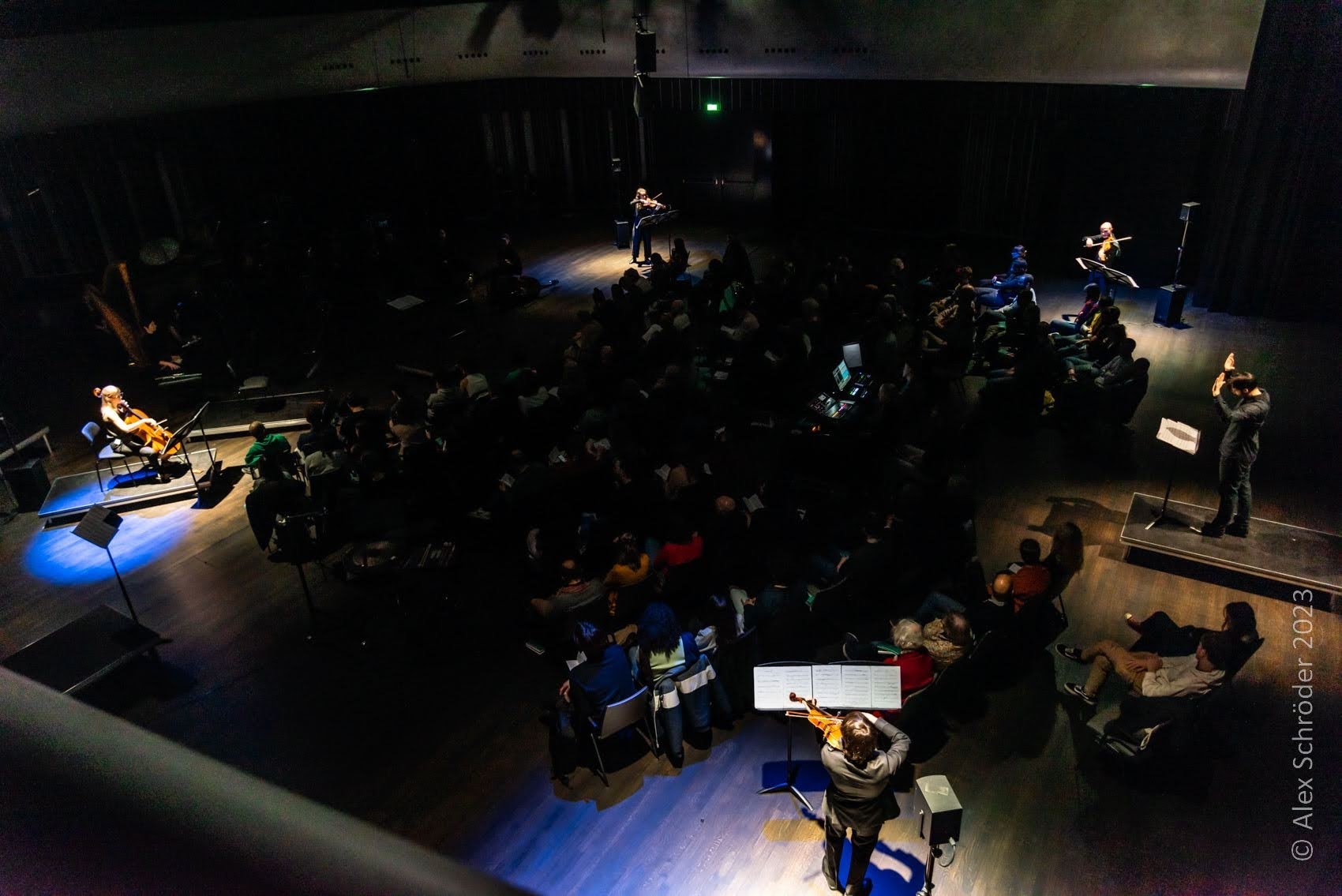
This concert took place on 18 February. In the continuous journey, the audience was taken through 6 different pieces from different periods of Seung-Won Oh's life. In one piece the players surrounded the audience, in another, they stood in the middle of the audience. The oldest piece was written in 1999 and the newest was a premiere.
What was it like for you to program pieces you wrote so long ago?
'I have accepted all the compositions from the different musical stages I have gone through. They are all part of me and the way I have developed as a composer. In a strange coincidence, even though they are in very different styles, there is an incredible connection between all the pieces.'
The day of the concert was preceded by a week of long days of rehearsal. Under the guidance of Gregory Charette, the students familiarized themselves with the new pieces.
What was the collaboration with the students like for you?
‘On the first day of rehearsals, I realized that I had forgotten to take into account the fact that I was working with students when I was programming. I thought I had overprogrammed because I had chosen very difficult pieces. Technically all the players are very good, but some of them were very new to contemporary music. There were some pieces that I was a little bit worried about because we only had five days to rehearse. But as each day went by, I noticed that all the players were developing so drastically.
These young musicians had the capacity to absorb so much in such a limited time, and they gave so much. They had this incredible exponential learning curve. It was an amazing experience for me.’
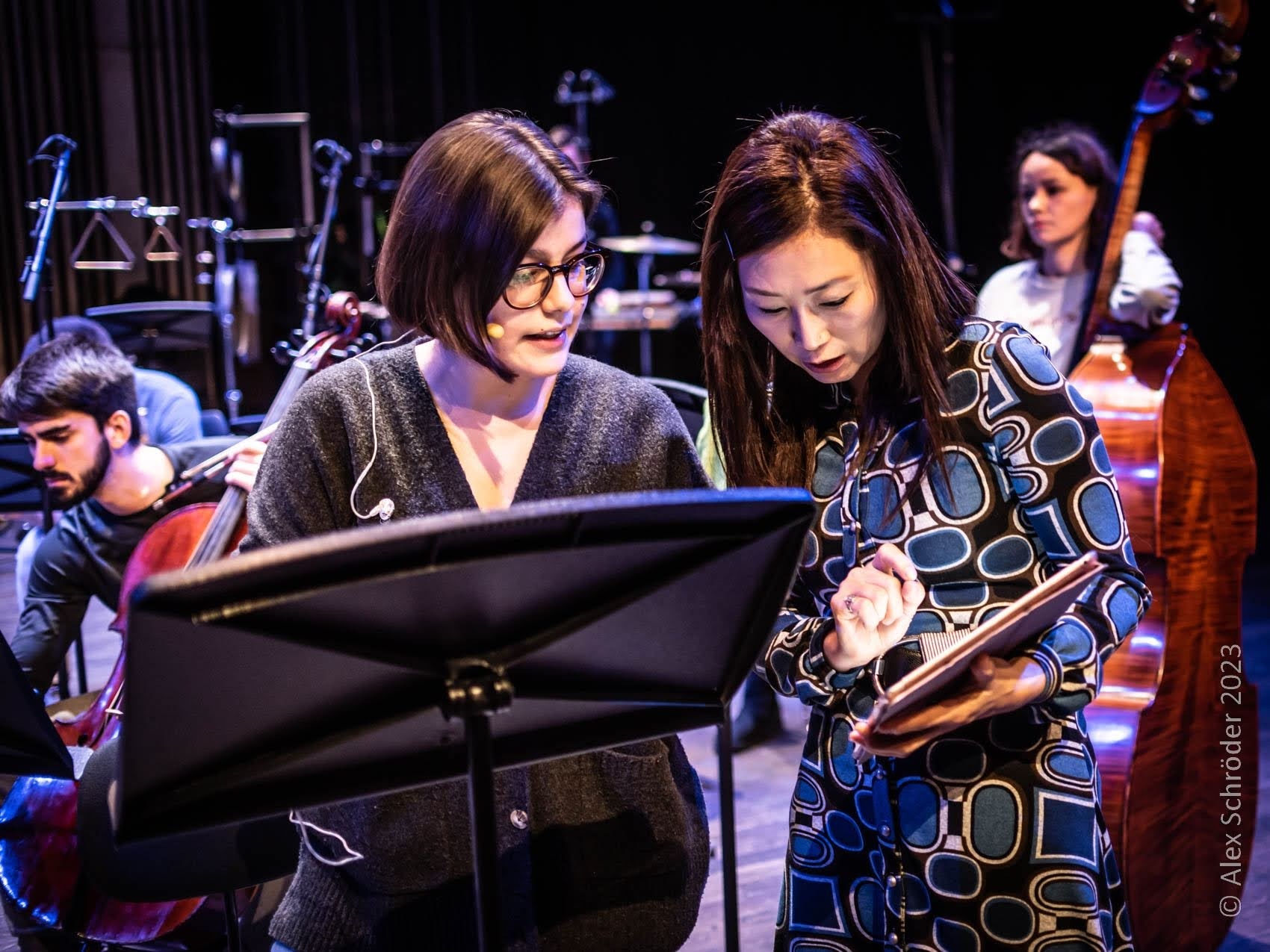
When you were a guest teacher at the Composition department 3 years ago, I followed your 'Non-western sounds and concepts' class. We discussed a lot of music like Korean traditional music, which also has a huge influence on your own work. Most students in the conservatoire are just trained in western music, would it be easier for them to play your music if they’d also been trained in non-western music?
‘People consider me as someone who is connecting western and eastern music and musicologists define me in this category. Of course, my Asian/Korean heritage is internalized in my music, it’s in my veins, it is just very natural to me, but not something that I am superficially trying to achieve.
I hope you heard it in this program. It is so western in a way, but some fundamental things like how I approach a glissando, and how the breath is important come from my Korean heritage, but this is on a very fundamental level.
I didn’t make a point about these things being an eastern concept to the Ensemble Academy, but I did have to explain the importance of thorough glissando and all these microtonal bendings. These concepts make my music of a certain color. I had to technically elaborate on that to make sure that everybody understood exactly what I meant. For example, in a glissando, the emphasis should be on the travel from one note to another rather than the departure and the arrival.
It is extremely beneficial and important for us as growing musicians to learn about other cultures. By listening to another type of music, you can take a distance from what you are doing and that is important to grow. It is not about trying to mimic or copy what another culture is doing but it is more about knowing the difference. So that you, as a musician, can decide on how you could solidify an idea more clearly.’
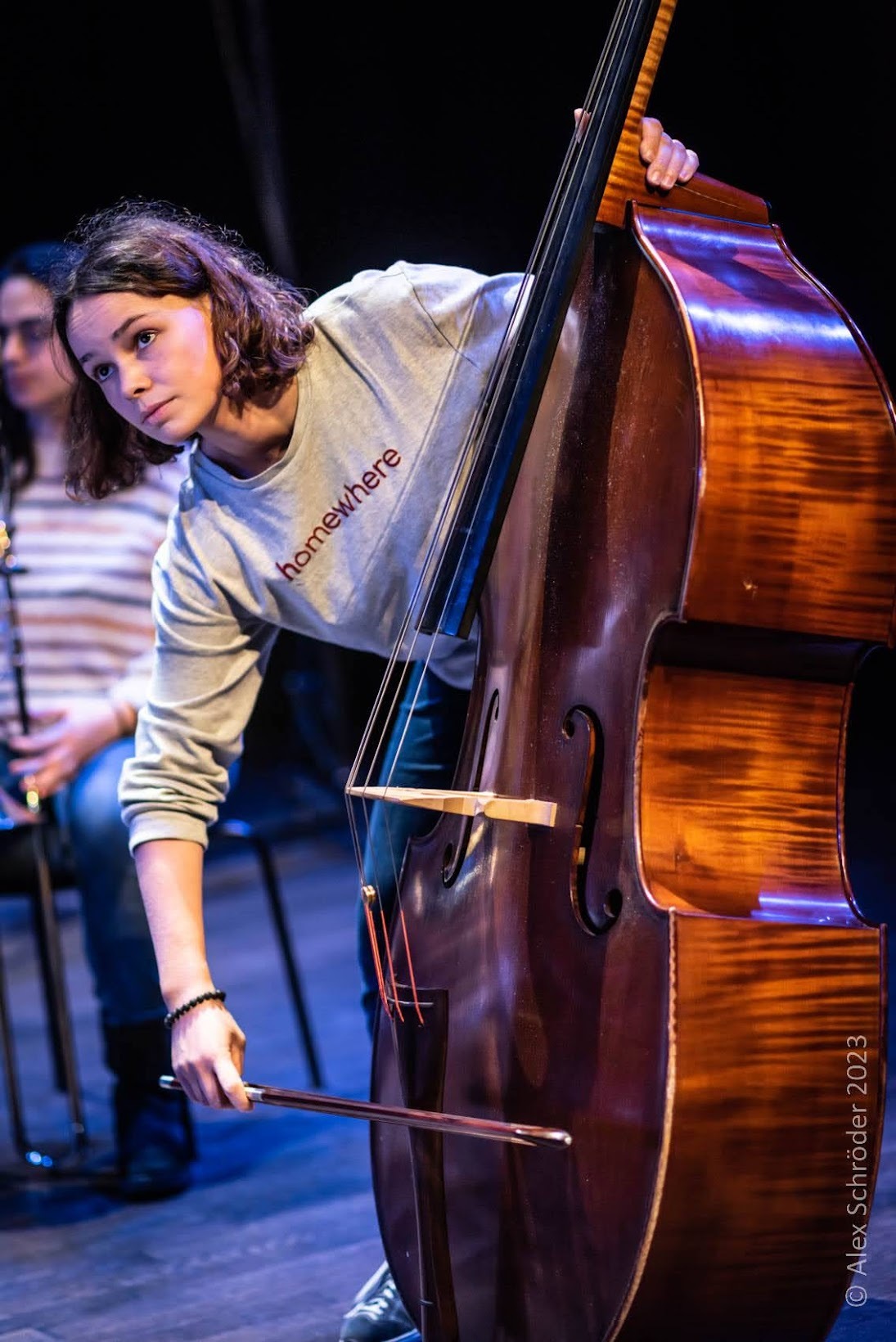
Did coming to Den Haag help you solidify your own ideas more clearly as well?
‘My connection with the Royal Conservatoire is very important. If I didn’t come to study here in The Hague back in 2001, I am not sure whether I would have become a solid music composer.
I was in a Composition program for many years, but I never really felt comfortable with introducing myself as a composer, and it was only after I came to The Netherlands, that I became more open to talk about music to other students. European composers had very strong ideas and opinions about what they were doing, I wasn’t like that when I came to The Netherlands.
Louis Andriessen told me when I met him the first time “You have everything to be a composer. You have all the techniques, but you don’t know yet why you are composing.” That was such a big problem I had to solve, and that lesson changed me into a real composer.
I am incredibly grateful to have this honor to get featured in Composer’s Portrait, it has been a truly enjoyable experience. I owe big thanks to everybody involved and especially the hardworking student players, who really understood my music in the end. I really appreciate them being so eager to learn and to get better and eventually to get to the result that I was hoping for. So I am very, very happy.'
